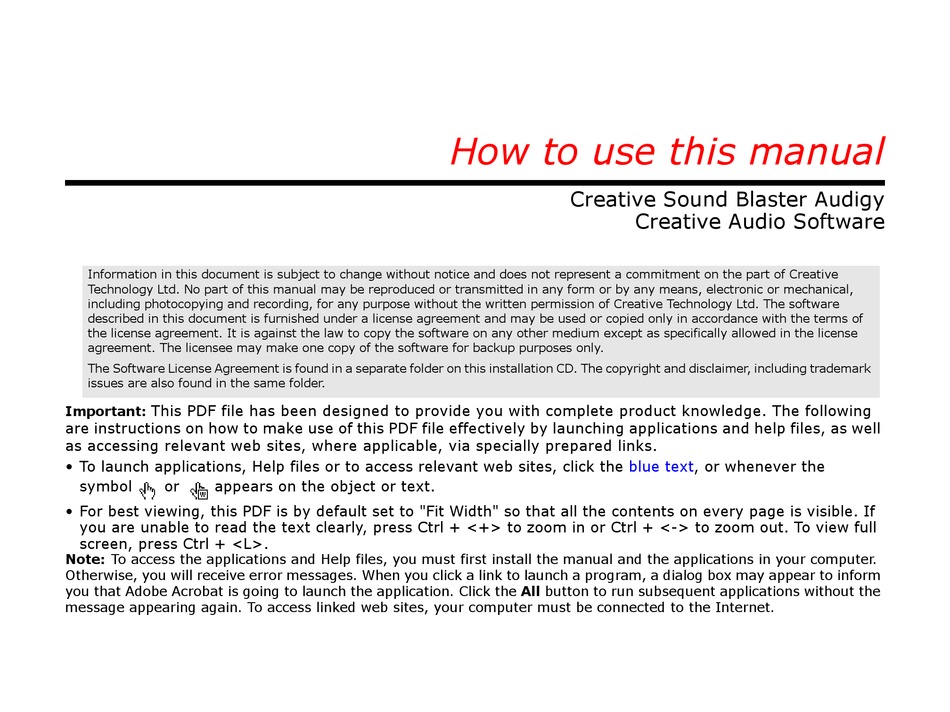
- #Sound blaster software conflict drivers
- #Sound blaster software conflict full
- #Sound blaster software conflict pro
- #Sound blaster software conflict windows
The lines in autoexec.bat look like this:
#Sound blaster software conflict windows
If you have Win9x installed CTCM always reads the CTPNP.CFG from the Windows directory. Then the file can be set to Read-Only with ATTRIB +R CTPNP.CFG. To make sure that CTCM always tries the same resource settings the desired resource configuration can be entered in CTPNP.CFG. For games that have fixed configuration values entered in the game setup this is impractical. However in case something is changed in the computer it may happen that CTCM finds different available resources and sets a configuration that is different from the previous.

When it finds available resources it prints them out and the BLASTER variable is set. The pragmatic approach is to call CTCM.EXE from the command line. On success it leaves the card configured, writes the current configuration back to CTPNP.CFG and sets the BLASTER environment variable. If resources are conflicting with other devices CTCM tries different settings. (if CTCM is not set then it uses C:\) It reads the configuration profile from CTPNP.CFG and tries to set the card to this resources. When CTCM.EXE is run it looks in the path set in the CTCM environment variable after the file CTPNP.CFG. There is also a text file with the name CTPNP.CFG where resource settings are contained.
#Sound blaster software conflict drivers
When you download the DOS drivers for PnP Sound Blasters you will find the two tools CTCM.EXE and CTCU.EXE. The configuration works slightly different here.

Semi-PnP Sound Blasters have only jumpers for the base port with markings IOS0, IOS1.
#Sound blaster software conflict full
Regarding the full configuration three types of Sound Blaster cards have to be considered: Note that H and P do not appear for earlier Sound Blasters.įor a Sound Blaster AWE32 the line would like like this: With the 16 bit DMA set to 1 (also called High DMA) and external MIDI port at 330. a printer resulted in noise output.įor a Sound Blaster 16 a typical variable setting looks like this: For later Sound Blasters it was changed to IRQ 5 as 7 is also default for the LPT1 parallel port. For Sound Blaster 1.x the default IRQ is 7. This implies of course that the card is actually jumpered to Port 220, IRQ 5 and DMA 1. A typical environment variable setting looks like this:įor a Sound Blaster 2.x.
#Sound blaster software conflict pro
On early Sound Blasters until Pro 2 all resources are set by jumpers. Some applications read just the port address from the BLASTER variable and determine the IRQ and DMA by auto detection.

6 - Sound Blaster 16, also SB 32, AWE32/64, ViBRA.3 - Sound Blaster 2.x (8 bit mono, 44.1 kHz) or compatible.2 - Sound Blaster Pro (8 bit stereo, 22 kHz) or compatible.1 - Sound Blaster 1.x (8 bit mono, 22 kHz) or compatible.kkk - port of the EMU8000 chipset when using an SB 32/AWE32/64 card, typically 620.www - port for external MPU-401 and wavetable at the waveblaster connector, typically 330, 300.v - DMA for 16 bit transfers, typically 5, 7.z - DMA for 8 bit transfers, typically 1, 0, 3.xxx - I/O port address in hex, typically 220, 240 or 260.The BLASTER variable stores the information in the following scheme: When software uses Sound Blaster cards in DOS it usually reads resource information from the BLASTERĮnvironment variable.


 0 kommentar(er)
0 kommentar(er)
